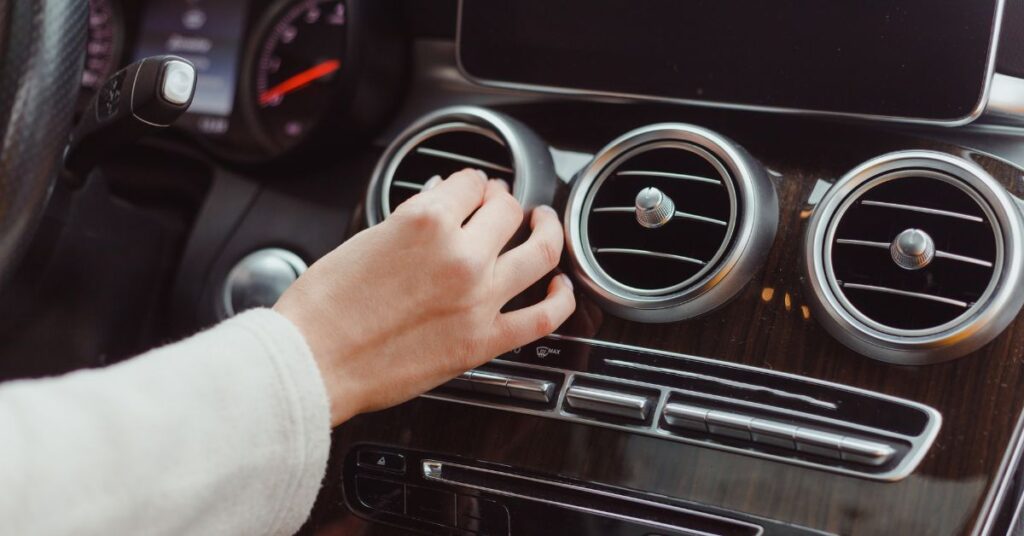
Table of Contents
Experiencing a car heater blowing cold air, especially during chilly weather, can be more than just uncomfortable. It can also indicate underlying issues with your vehicle’s heating system. Understanding why this happens is crucial for a timely fix and can save you from more severe problems. Let’s explore the common reasons behind a car heater’s cold air output and what they signify for your vehicle’s health.
Common Reasons Your Car Heater Is Blowing Cold Air
When you turn on your car heater, you expect a comforting blast of warm air However, if you’re greeted with an unwelcome gust of cold air, it’s a sign that something isn’t working right in your vehicle’s heating system. There are several common culprits behind this issue, each pointing to different aspects of your car’s functionality. Let’s explore the most common reasons why your car’s heater might be blowing cold air.
Low Coolant Level
The heating system in your car relies heavily on the engine’s coolant to provide heat. If your vehicle has a low coolant level, it can’t circulate through the engine and reach the heater core effectively. This issue is often the first thing to check when you notice cold air from the heater. Low coolant can result from leaks in hoses, the radiator, or the water pump. Regularly checking and topping up the coolant can prevent this issue.
Thermostat Issues
The thermostat plays a pivotal role in regulating the temperature of the coolant. A thermostat stuck in the open position causes the coolant to flow continuously, preventing it from reaching the optimal temperature needed to heat the air. Conversely, a stuck closed thermostat can lead to engine overheating, paradoxically resulting in the heater blowing cold air. Replacing or repairing the thermostat can resolve this issue.
Heater Core Problems
The heater core acts like a mini radiator, transferring heat from the hot coolant to the air that enters your cabin. If the heater core is clogged or damaged, it impedes this heat transfer. Common signs of heater core problems include a sweet smell inside the car (indicating a coolant leak) or foggy windows. Flushing the heater core or repairing leaks can restore proper heating function.
Air Trapped in the Cooling System
Air pockets in the cooling system can obstruct the flow of coolant, preventing it from adequately reaching the heater core. This issue is often encountered after coolant has been drained and refilled, such as after a repair. Bleeding the cooling system to remove these air pockets is critical in ensuring the heater functions correctly.
Faulty Blend Door or Actuator
Inside your car’s heating system, a blend door directs air over the heater core or bypasses it. If the blend door or its actuator (the mechanism that moves the door) is faulty, it can result in cold air being circulated in the cabin. Diagnosing and fixing blend door issues typically requires some disassembly of the dashboard or heating system components.
Malfunctioning HVAC Controls
Sometimes, the issue might be as simple as the controls on your dashboard needing to be fixed. These controls manage the temperature settings for your heating system. They could incorrectly signal the system to blow cold air if it malfunctions. This can be an electrical issue or a matter of wear and tear.
Water Pump Issues
The water pump is crucial for circulating coolant throughout the engine and into the heater core. If it’s failing or not working efficiently, it can lead to poor circulation of the hot coolant necessary for heating. A malfunctioning water pump can often be accompanied by overheating or coolant leaks.
Insufficient Engine Warm-Up Time
On frigid days, your engine needs time to reach its optimal operating temperature, during which the coolant heats up. If you start your heater too soon, you might experience cold air simply because the engine hasn’t warmed up enough. Allowing your car a few extra minutes to idle can solve this problem.
Schedule Service With McCullough NAPA
Several factors can lead to your car heater blowing cold air, ranging from low coolant levels to more complex issues like heater core problems. Understanding these reasons is crucial for diagnosing and addressing the issue effectively. Regular maintenance checks and prompt attention to any signs of malfunction are critical to ensuring a warm and comfortable driving experience during colder months.
McCullough NAPA Auto Care is here to make sure your heater blows warm air. If you’re experiencing issues with your car heater, contact us today for an inspection with certified professionals.
FAQ About Car Heater Blowing Cold Air
Cold air blowing from your car’s heater when you expect warm air is typically due to issues like low coolant levels, a malfunctioning thermostat, clogged heater core, or problems with the blend door or its actuator. It signifies that the heating system is unable to transfer engine heat to the car’s interior.
Fixing a car heater that blows cold air depends on the underlying cause. Check and refill the coolant if it’s low, inspect and replace the thermostat if faulty, flush the heater core if clogged, and repair any issues with the blend door or HVAC controls. In some cases, professional diagnosis and repair may be necessary.
No heat coming from your car heater could be due to several reasons, including a completely clogged heater core, a failed thermostat, depleted coolant levels, or serious issues with the vehicle’s heating system. It’s essential to diagnose these issues to restore proper heating function.
Cold air blowing out of vents when the heat is on typically indicates a problem within the heating system, such as a stuck blend door, low coolant level, a malfunctioning thermostat, or a blocked heater core. These issues prevent the hot air generated by the engine from reaching the car’s interior.
To stop cold air from coming through your vents, first identify the cause of the problem. Check for low coolant levels, assess the thermostat, ensure the blend door is functioning correctly, and inspect the heater core for blockages. Resolving these issues will help restore the proper flow of warm air.

